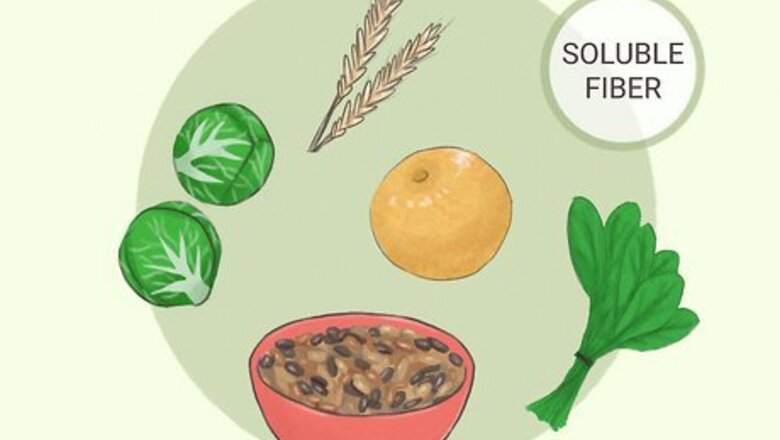
views
Here are 11 effective ways to lower LDL cholesterol.
Get 5-10 grams of soluble fiber a day.
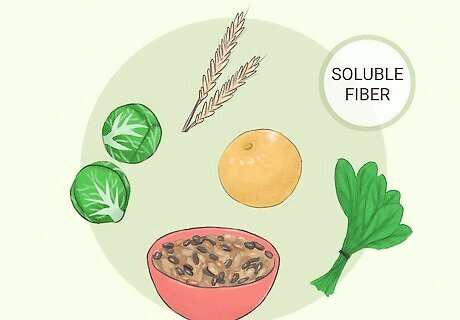
Soluble fiber soaks up LDL cholesterol and removes it from your body. Most people don't eat enough soluble fiber, which helps lower your LDL cholesterol. Good sources of soluble fiber include oatmeal (2 grams), quinoa (1 gram), edamame pasta (3 grams), kidney beans (3 grams), sweet potatoes (2 grams), chia seeds (7 grams), oranges (2 grams), Brussels sprouts (2 grams), and spinach (1 gram). For example, if you start the day with a bowl of oatmeal or an oat-based cereal for breakfast, topped with sliced bananas or strawberries, you've got 1.5 to 2.5 grams of soluble fiber already. If you add a source of soluble fiber to each of the meals you eat, you'll be well on your way to getting the recommended amount.
Fill up on delicious fruits and veggies.
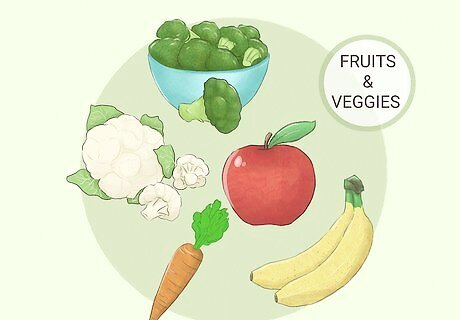
Eat 5 servings of fruits and vegetables every day. A serving is about half a cup (about 62 grams or 2 ounces). Fruits and vegetables are high in plant stanols and sterols, which act like soluble fiber to soak up that LDL cholesterol and get it out of your body. Good fruits to eat include apples, bananas, oranges, pears, and prunes, which are also high in soluble fiber. Good vegetables include sweet potatoes, broccoli, okra, cauliflower, turnips, parsnips, tomatoes, leeks, and carrots.
Eat fish twice a week.
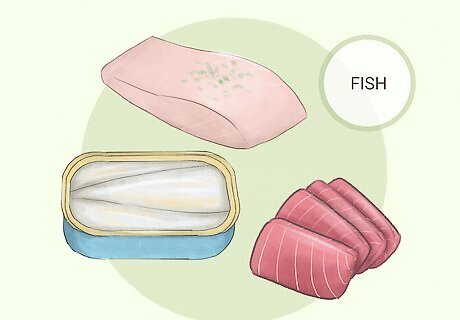
Fish such as salmon, tuna, and mackerel are good sources of omega-3s. While omega-3s don't directly lower your LDL cholesterol, they do raise your HDL cholesterol. HDL cholesterol grabs up the LDL cholesterol in your bloodstream and flushes it out of your system. There's also evidence that omega-3s reduce your risk of heart attack by protecting your heart from blood clots and inflammation.
Cook with vegetable oil.
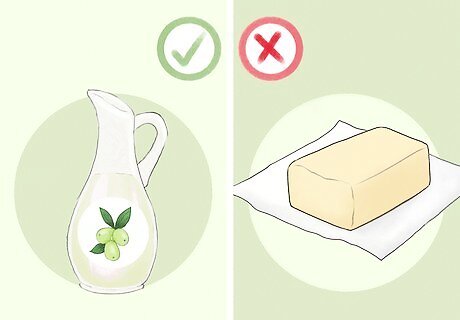
Replace butter, lard, or shortening with vegetable oil. Butter, lard, and shortening are high in LDL cholesterol while liquid vegetable oils can actually help lower it. Good vegetable oil choices include olive, sunflower, and safflower oil. In most recipes, this is a pretty simple substitution. If your favorite recipe doesn't work as well with vegetable oil, search online for alternatives. A good rule of thumb is to stick to cooking oils such as sunflower, olive, or canola oil that don't get hard in the fridge like butter and shortening do.
Add foods fortified with sterols and stanols.

Just 2 grams of sterols and stanols a day can lower LDL cholesterol by 10%. Sterols and stanols are plant chemicals similar in size and shape to cholesterol that block LDL cholesterol from being stored. You get sterols and stanols in fruits and vegetables, but why stop there? The health benefits of sterols and stanols are trendy, and food companies are adding them to everything from margarine and granola bars to chocolate. Check the nutrition labels, especially on your snacks, and buy products that have added sterols and stanols. You can also buy sterols and stanols as supplements. Although your body typically gets more benefit out of them if you eat them in food, taking a supplement doesn't hurt.
Substitute soy for dairy.

Consuming 25 grams of soy a day reduces LDL cholesterol 5-6%. This is a relatively modest effect, so if you don't like the taste of soy, don't worry about it! But if you switch to soy milk and your morning coffee, you'll get the added bonus of reducing your cholesterol, even if it's only a little. Remember—every little bit helps. Substituting tofu for ground meat in casseroles and other dishes also helps lower your LDL cholesterol. Once you get all the sauce and other ingredients in there, you might not even notice the difference.
Cut back on sugar and processed carbs.
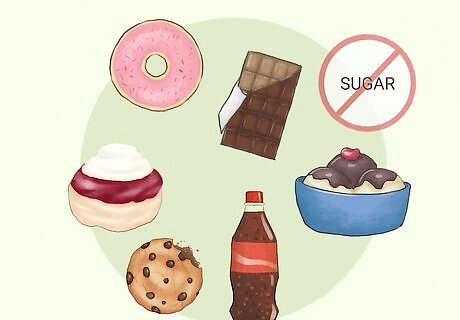
Sugar turns to glucose, which your liver turns to cholesterol. Processed carbs, such as white flour, have the same effect as sugar. Just swap out your white bread for whole-grain bread and you won't have that problem! Save pastries and candies for occasional treats to curb your consumption of refined sugars. If you're craving something sweet, the combination of almonds and dark chocolate can actually reduce your LDL cholesterol.
Eliminate vices such as nicotine and alcohol.
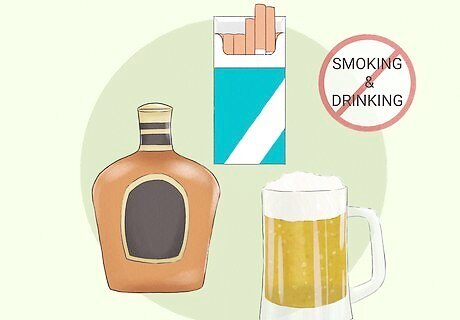
Smoking and drinking lower your good cholesterol. HDL helps remove LDL from your bloodstream, so you want it to be high. It's true that moderate alcohol consumption has been linked to higher HDL cholesterol—but it's not enough of a benefit that you should start drinking if you don't already. Legitimately, not drinking at all is always going to be better for your health than drinking. But if you like to have a glass of wine with dinner, it's not going to hurt you to keep doing that. Smoking is a different story. Quitting smoking will greatly increase your HDL levels, and these changes start within 20 minutes after you take your last puff. After a year, you've cut your risk of heart disease in half.
Exercise for 30 minutes at least 5 days a week.
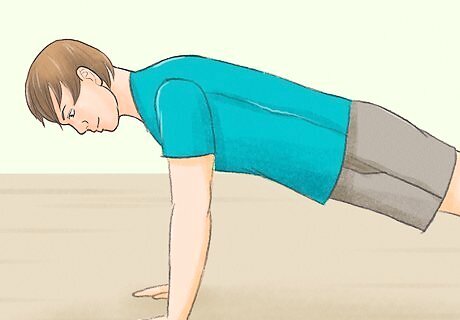
Moderate activity boosts your HDL cholesterol levels. HDL cholesterol picks up excess LDL cholesterol in your bloodstream and moves it out of your body. Activities such as a brisk walk, swimming, or biking are considered "moderate"—you might be breaking a sweat, but you can still carry on a conversation. If you're getting into more vigorous activity, you don't need to exercise as much to get the same benefits—about 20 minutes 3 times a week. Exercise doesn't have to mean going to the gym. Find an activity you enjoy and get a friend to do it with you. That way, it'll seem less like work and more like fun! Always talk to your doctor before starting a new exercise program. They'll let you know if you're healthy enough to do what you want and can recommend activities to get you started. Stay active during your daily life as well. For example, you might take the stairs instead of the elevator. You'll boost your metabolism, which jumpstarts many positive changes in your health.
Lose weight if you're overweight.
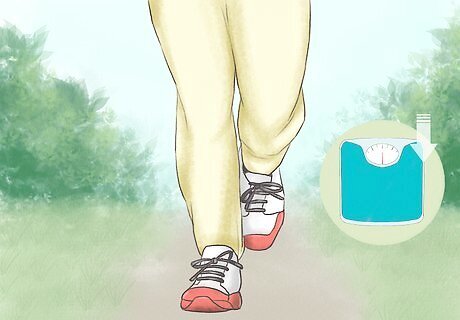
Losing even 5-10 pounds can lower your LDL cholesterol. If you're overweight, talk to your doctor about creating a weight-loss plan. Losing weight isn't easy, but it'll lower your cholesterol as well as improving your overall health. Being overweight increases your cholesterol and also puts you at greater risk of heart disease and other health problems.
Talk to your doctor about medication.
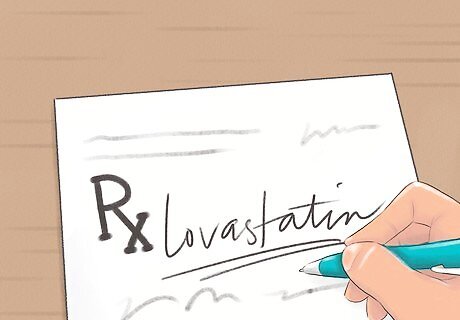
If diet and exercise aren't working fast enough, medication might help. Cholesterol-lowering medications are typically designed to be taken in the short term. Over the course of a few weeks, these drugs can dramatically lower your LDL cholesterol. Drugs typically prescribed for high cholesterol include: Statins (lovastatin, pravastatin, simvastatin, fluvastatin, atorvastatin, and rosuvastatin): lower LDL cholesterol 25-55% while also lowering triglycerides and raising HDL cholesterol Ezetimibe: lowers LDL cholesterol 18-25%; can be combined with statins Bile acid resins: lower LDL cholesterol 15-30% Nicotinic acid (niacin): lowers LDL cholesterol 5-15%




















Comments
0 comment